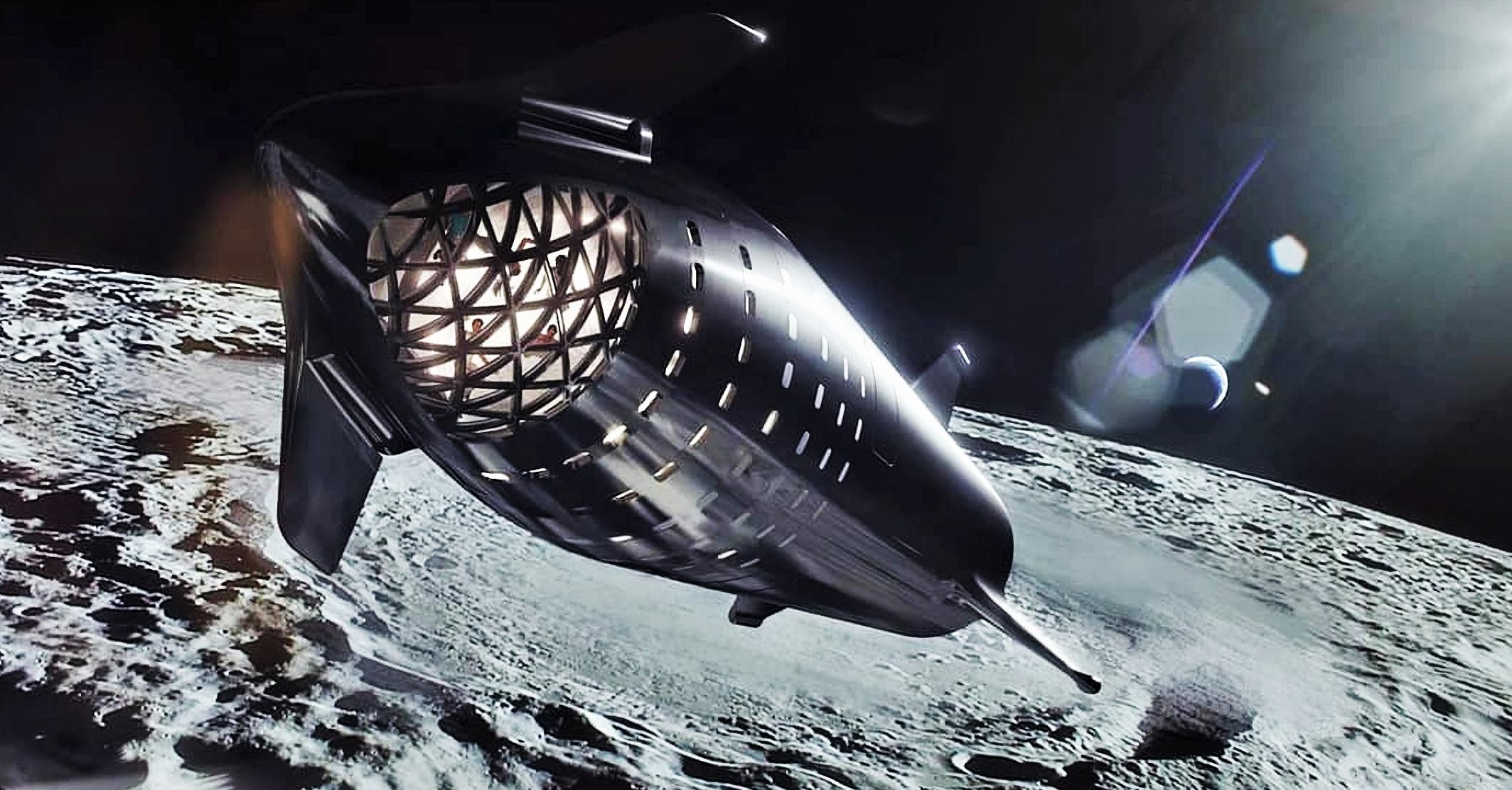

News
SpaceX to mature Starship Moon landing and orbital refueling tech with NASA’s help
NASA has announced 19 technology partnerships between the agency’s many spaceflight centers and 13 companies, including SpaceX, Blue Origin, and more. This round of Space Act Agreements (SAAs) shows a heavy focus on technologies and concepts that could benefit exploration of the Moon and deep space more generally, including lunar landers, food production, reusable rockets, and more.
Put simply, all 19 awards are great and will hopefully result in tangible products and benefits, but SpaceX has a track record of achievement on the cutting edge of aerospace that simply has not been touched over the last decade. As such, the company’s two SAAs are some of the most interesting and telling, both ultimately focused on enabling Starship launches to and landings on the Moon and any number of other destinations in the solar system. Perhaps most importantly, it signals a small but growing sect within NASA that is willing and eager to acknowledge Starship’s existence and actively work with SpaceX to both bring it to life and further spaceflight technology in general.
One agreement focuses specifically on “vertically land[ing] large rockets on the Moon”, while the other more generally seeks to “advance technology needed to transfer propellant in orbit”, a feature that Starship’s utility would be crippled without. In this particular round of SAAs, they will be “non-reimbursable” – bureaucratic-speak for a collaboration where both sides pay their own way and no money is exchanged. SpaceX’s wins ultimately show that, although NASA proper all but refuses to acknowledge Starship, the many internal centers it is nothing without are increasingly happy to extend olive branches towards the company and its ambitious next-generation rocket.
“SpaceX of Hawthorne, California, will work with NASA’s Kennedy Space Center in Florida to advance their technology to vertically land large rockets on the Moon. This includes advancing models to assess engine plume interaction with lunar regolith.”
“SpaceX will work with Glenn and Marshall to advance technology needed to transfer propellant in orbit, an important step in the development of the company’s Starship space vehicle.”
NASA, July 30th, 2019
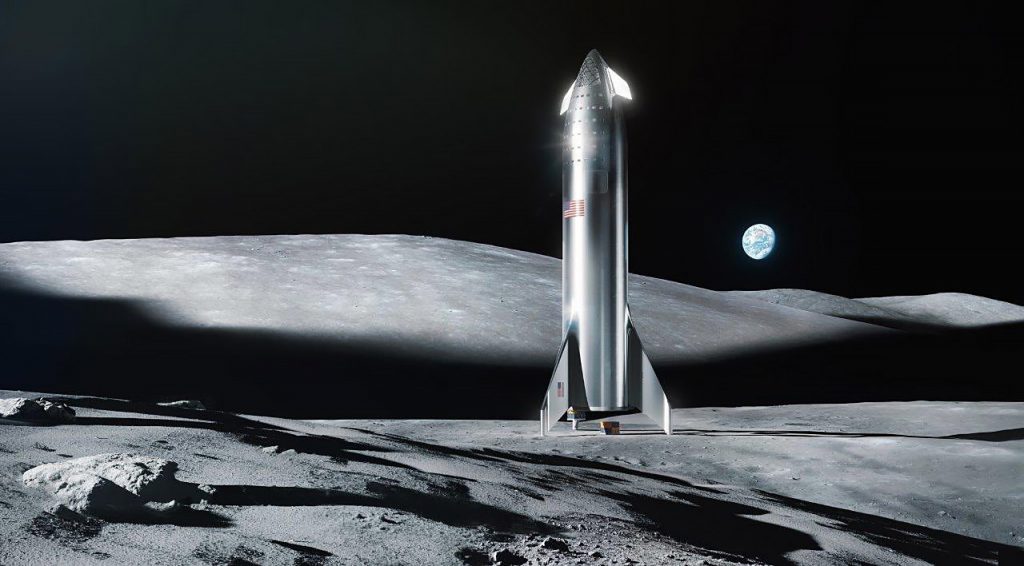
Giant rockets on the Moon
SpaceX’s first SAA centers around studying the task of landing Starship – a “large rocket” – on the Moon and attempting to understand just how the Moon’s powdery regolith (i.e. inorganic topsoil) will respond when subjected to the plume of a Raptor engine. Put simply, the task of landing a spacecraft as massive as Starship has never been attempted on the Moon, and the process itself – irrespective of any potential surprises from plume-regolith interaction – poses some obvious challenges.
In the most basic sense, Starship is massive. According to the vehicle’s circa. 2018 dimensions, it will stretch 55m (180 ft) from nose to tail, be 9m (30 ft) in diameter, and weigh (per 2017 specs) ~85 tons (190,000 lb) empty and upwards of ~1350 tons (2.95 million lbs) fully fueled. For reference, that is almost 80% as tall and more than 2.5 times as heavy as an entire Falcon 9 rocket. In the history of lunar exploration, Apollo’s Lunar Module (LM) – including landing and ascent stages – is the heaviest vehicle to have ever landed on the Moon, weighing a maximum of 5500 kg (12,100 lb) at landing (Apollo 17).
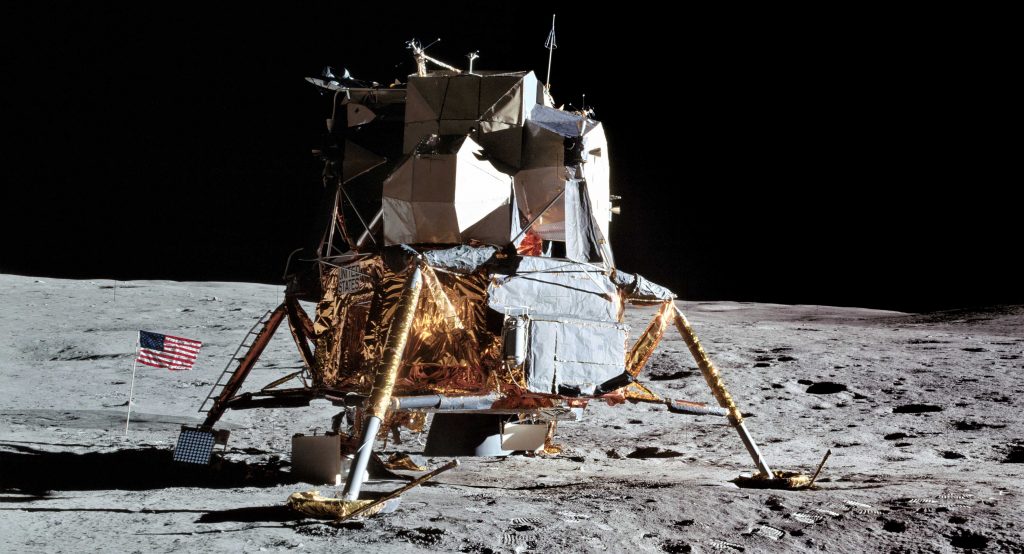
As such, an expendable Starship landing on the Moon with zero propellant for a possible return to Earth would easily break the record for landed mass by a factor of 10-20, while a Starship landing with enough delta V to simply return to lunar orbit – let alone land back on Earth – could easily up that to 30-50x.
Aside from the mass of Starship, there is also the question of how to gently land the spacecraft in the first place. Lunar gravity is roughly 1/6th of Earth’s, meaning that, say, 200 tons (i.e. Raptor’s thrust) would equate to more than 1200 tons of effective thrust on the Moon, a more than 10:1 thrust-to-weight ratio. For reference, the Apollo Lunar Module descent stage was powered by an engine with ~10,000 lbf (4.5 tons) of thrust that could throttle as low as ~1000 lbf (0.45 tons), meaning that even in lunar gravity conditions, the LM could have a thrust-to-weight ratio less than 1. For the purpose of safely landing on the Moon and ensuring a gentle landing, that is an extremely desirable thing to have.
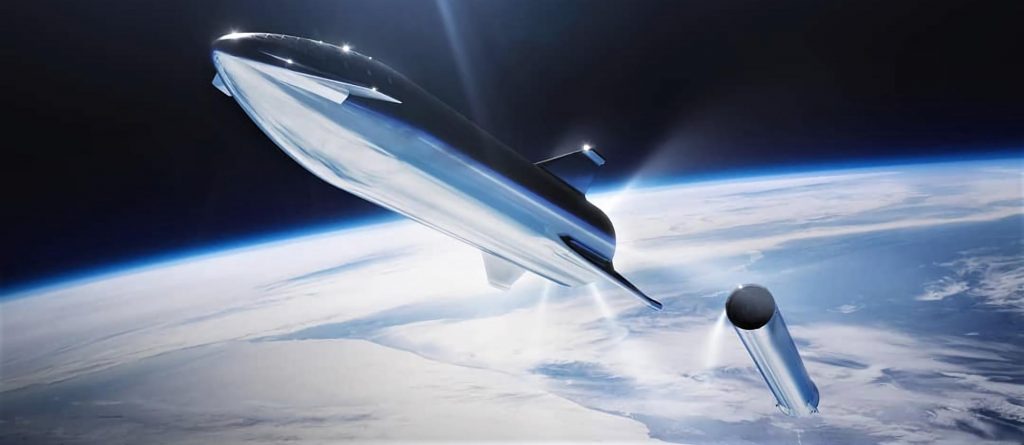
Much like Falcon 9’s upper stage features cold-gas nitrogen thrusters to settle its propellant before MVac ignition, Starship will likely need a similar system, and it’s possible that that system could be used to gently land Starship and tweak its velocity in the final stages of a Moon landing. This study will likely be used in part to figure out what exactly the optimal method of landing Starship is.
How to Refuel Your Starship
Finally, SpaceX’s second NASA SAA focuses on developing the immature technology of in-orbit propellant transfer, an absolute necessity for Starship to simultaneously be fully reusable and capable of landing significant payloads on other planets (or moons). Ever since SpaceX CEO Elon Musk first revealed the company’s Mars-bound launch vehicle in 2016, it has incorporated in-orbit refueling as a foundational feature.

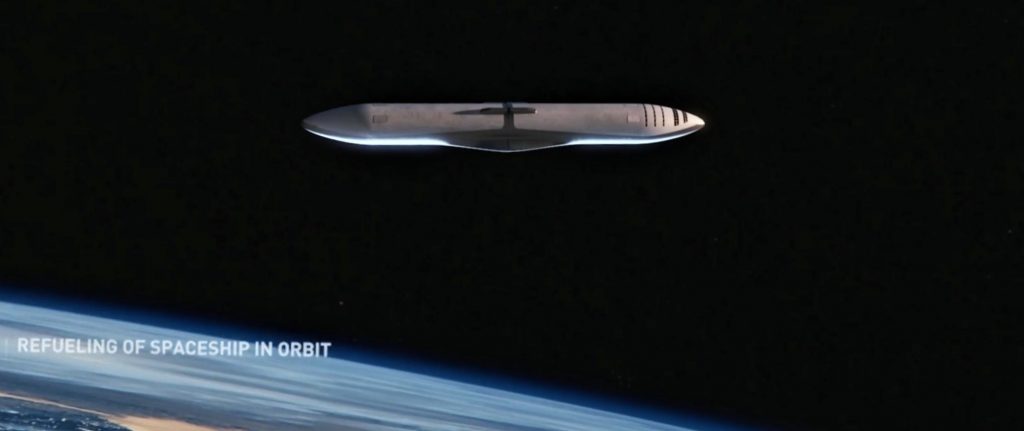
Due to the additions required for full reusability, Starship will essentially need to be launched into Earth orbit and then quickly refueled anywhere from 1 to 10+ times depending on the ultimate destination and the mass of the cargo being delivered. This is not to say that Starship will be useless without refueling – according to SpaceX VP of Sales Jonathan Hofeller, Starship will be capable of launching more than 100 tons (220,000 lb) to low Earth orbit and 20 tons (44,000 lb) to geostationary transfer orbit (GTO), more than enough to satisfy every commercial demand currently in existence.
However, with one or several refueling missions, Starship should be able to turn 100 tons to LEO into 100 tons to the surface of Mars or dozens of tons to the surface of the Moon. Put simply, with reliable and fast refueling, Starship goes from being a major step forward in reusable spaceflight to the key to the solar system and to radically affordable deep spaceflight.
Check out Teslarati’s Marketplace! We offer Tesla accessories, including for the Tesla Cybertruck and Tesla Model 3.

News
Tesla aims to combat common Full Self-Driving problem with new patent
Tesla writes in the patent that its autonomous and semi-autonomous vehicles are heavily reliant on camera systems to navigate and interact with their environment.
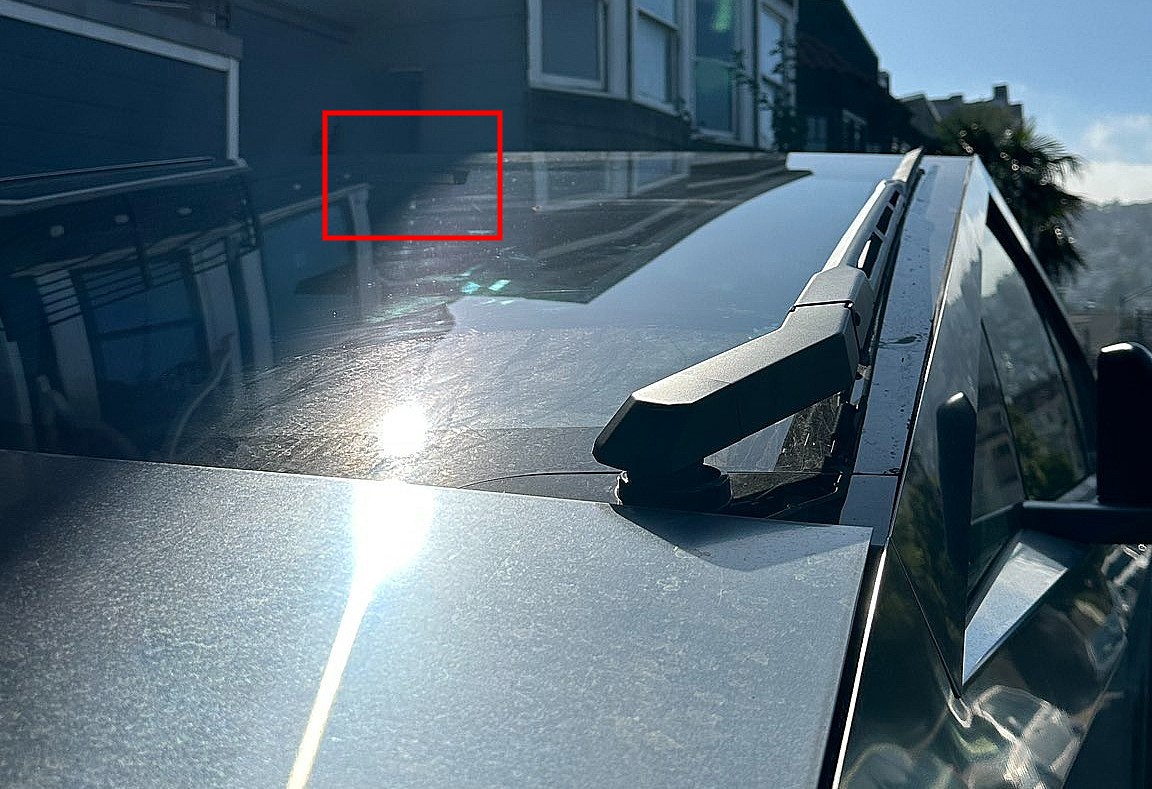
Tesla is aiming to combat a common Full Self-Driving problem with a new patent.
One issue with Tesla’s vision-based approach is that sunlight glare can become a troublesome element of everyday travel. Full Self-Driving is certainly an amazing technology, but there are still things Tesla is aiming to figure out with its development.
Unfortunately, it is extremely difficult to get around this issue, and even humans need ways to combat it when they’re driving, as we commonly use sunglasses or sun visors to give us better visibility.
Cameras obviously do not have these ways to fight sunglare, but a new patent Tesla recently had published aims to fight this through a “glare shield.”
Tesla writes in the patent that its autonomous and semi-autonomous vehicles are heavily reliant on camera systems to navigate and interact with their environment.

The ability to see surroundings is crucial for accurate performance, and glare is one element of interference that has yet to be confronted.
Tesla described the patent, which will utilize “a textured surface composed of an array of micro-cones, or cone-shaped formations, which serve to scatter incident light in various directions, thereby reducing glare and improving camera vision.”

The patent was first spotted by Not a Tesla App.
The design of the micro-cones is the first element of the puzzle to fight the excess glare. The patent says they are “optimized in size, angle, and orientation to minimize Total Hemispherical Reflectance (THR) and reflection penalty, enhancing the camera’s ability to accurately interpret visual data.”
Additionally, there is an electromechanical system for dynamic orientation adjustment, which will allow the micro-cones to move based on the angle of external light sources.
This is not the only thing Tesla is mulling to resolve issues with sunlight glare, as it has also worked on two other ways to combat the problem. One thing the company has discussed is a direct photon count.
CEO Elon Musk said during the Q2 Earnings Call:
“We use an approach which is direct photon count. When you see a processed image, so the image that goes from the sort of photon counter — the silicon photon counter — that then goes through a digital signal processor or image signal processor, that’s normally what happens. And then the image that you see looks all washed out, because if you point the camera at the sun, the post-processing of the photon counting washes things out.”
Future Hardware iterations, like Hardware 5 and Hardware 6, could also integrate better solutions for the sunglare issue, such as neutral density filters or heated lenses, aiming to solve glare more effectively.
Elon Musk
Delaware Supreme Court reinstates Elon Musk’s 2018 Tesla CEO pay package
The unanimous decision criticized the prior total rescission as “improper and inequitable,” arguing that it left Musk uncompensated for six years of transformative leadership at Tesla.

The Delaware Supreme Court has overturned a lower court ruling, reinstating Elon Musk’s 2018 compensation package originally valued at $56 billion but now worth approximately $139 billion due to Tesla’s soaring stock price.
The unanimous decision criticized the prior total rescission as “improper and inequitable,” arguing that it left Musk uncompensated for six years of transformative leadership at Tesla. Musk quickly celebrated the outcome on X, stating that he felt “vindicated.” He also shared his gratitude to TSLA shareholders.
Delaware Supreme Court makes a decision
In a 49-page ruling Friday, the Delaware Supreme Court reversed Chancellor Kathaleen McCormick’s 2024 decision that voided the 2018 package over alleged board conflicts and inadequate shareholder disclosures. The high court acknowledged varying views on liability but agreed rescission was excessive, stating it “leaves Musk uncompensated for his time and efforts over a period of six years.”
The 2018 plan granted Musk options on about 304 million shares upon hitting aggressive milestones, all of which were achieved ahead of time. Shareholders overwhelmingly approved it initially in 2018 and ratified it once again in 2024 after the Delaware lower court struck it down. The case against Musk’s 2018 pay package was filed by plaintiff Richard Tornetta, who held just nine shares when the compensation plan was approved.
A hard-fought victory
As noted in a Reuters report, Tesla’s win avoids a potential $26 billion earnings hit from replacing the award at current prices. Tesla, now Texas-incorporated, had hedged with interim plans, including a November 2025 shareholder-approved package potentially worth $878 billion tied to Robotaxi and Optimus goals and other extremely aggressive operational milestones.
The saga surrounding Elon Musk’s 2018 pay package ultimately damaged Delaware’s corporate appeal, prompting a number of high-profile firms, such as Dropbox, Roblox, Trade Desk, and Coinbase, to follow Tesla’s exodus out of the state. What added more fuel to the issue was the fact that Tornetta’s legal team, following the lower court’s 2024 decision, demanded a fee request of more than $5.1 billion worth of TSLA stock, which was equal to an hourly rate of over $200,000.
Delaware Supreme Court Elon Musk 2018 Pay Package by Simon Alvarez
News
Tesla Cybercab tests are going on overdrive with production-ready units
Tesla is ramping its real-world tests of the Cybercab, with multiple sightings of the vehicle being reported across social media this week.

Tesla is ramping its real-world tests of the Cybercab, with multiple sightings of the autonomous two-seater being reported across social media this week. Based on videos of the vehicle that have been shared online, it appears that Cybercab tests are underway across multiple states.
Recent Cybercab sightings
Reports of Cybercab tests have ramped this week, with a vehicle that looked like a production-ready prototype being spotted at Apple’s Visitor Center in California. The vehicle in this sighting was interesting as it was equipped with a steering wheel. The vehicle also featured some changes to the design of its brake lights.
The Cybercab was also filmed testing at the Fremont factory’s test track, which also seemed to involve a vehicle that looked production-ready. This also seemed to be the case for a Cybercab that was spotted in Austin, Texas, which happened to be undergoing real-world tests. Overall, these sightings suggest that Cybercab testing is fully underway, and the vehicle is really moving towards production.
Production design all but finalized?
Recently, a near-production-ready Cybercab was showcased at Tesla’s Santana Row showroom in San Jose. The vehicle was equipped with frameless windows, dual windshield wipers, powered butterfly door struts, an extended front splitter, an updated lightbar, new wheel covers, and a license plate bracket. Interior updates include redesigned dash/door panels, refined seats with center cupholders, updated carpet, and what appeared to be improved legroom.
There seems to be a pretty good chance that the Cybercab’s design has been all but finalized, at least considering Elon Musk’s comments at the 2025 Annual Shareholder Meeting. During the event, Musk confirmed that the vehicle will enter production around April 2026, and its production targets will be quite ambitious.








